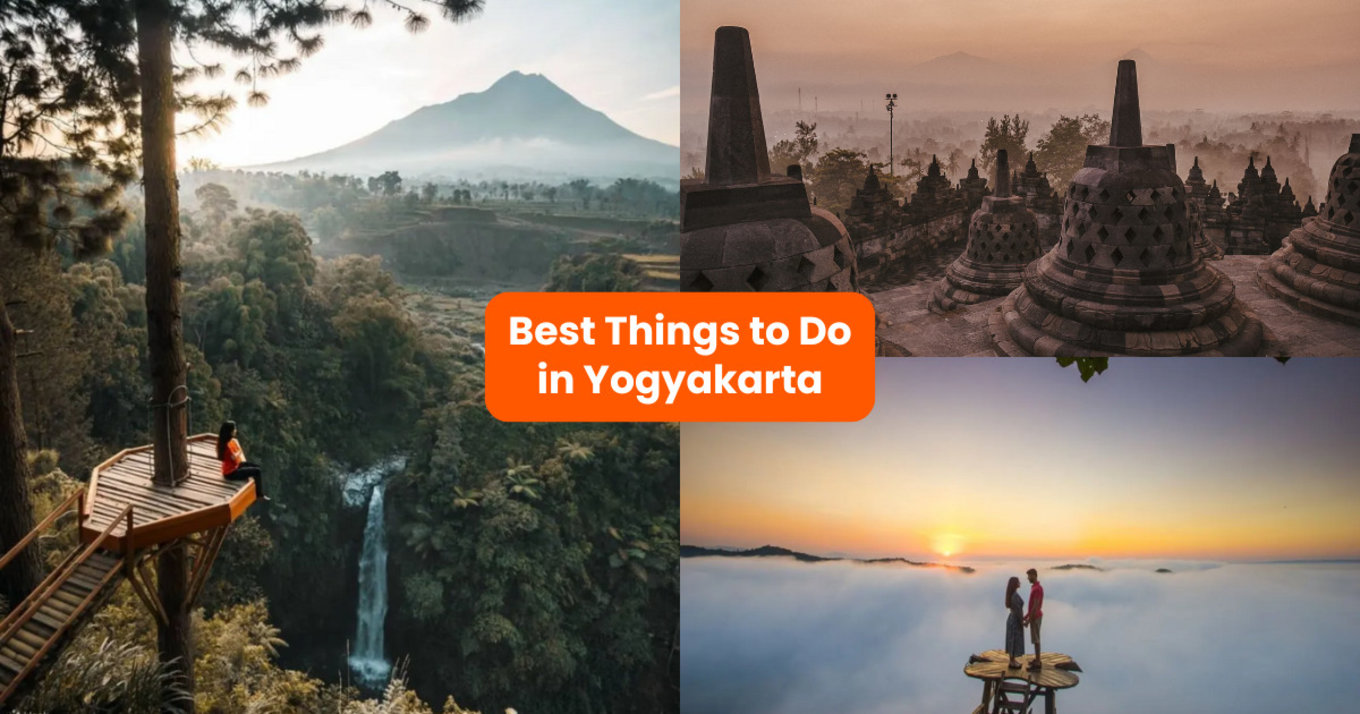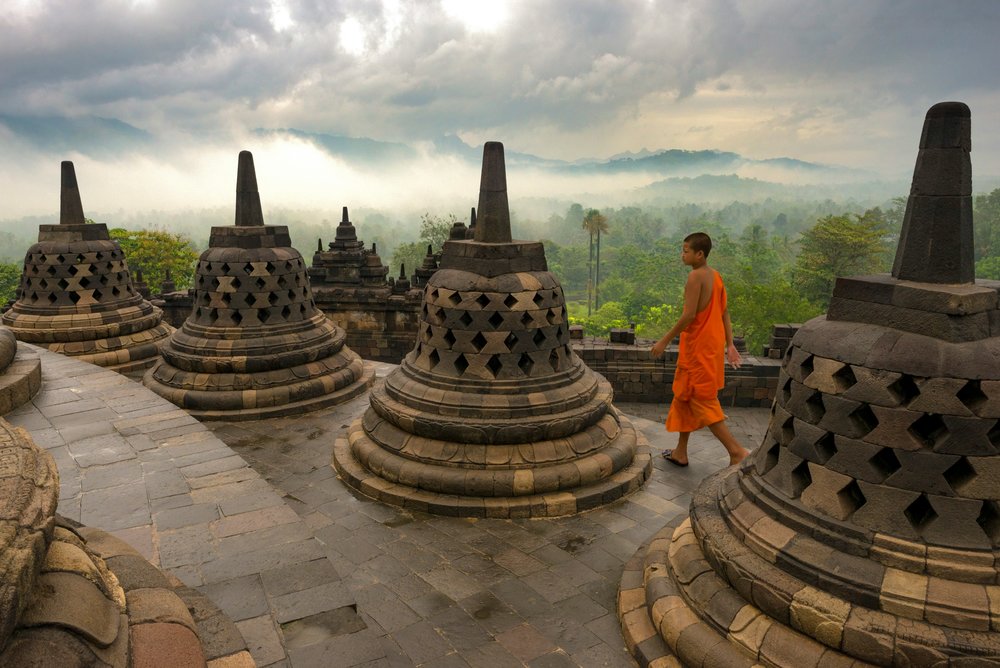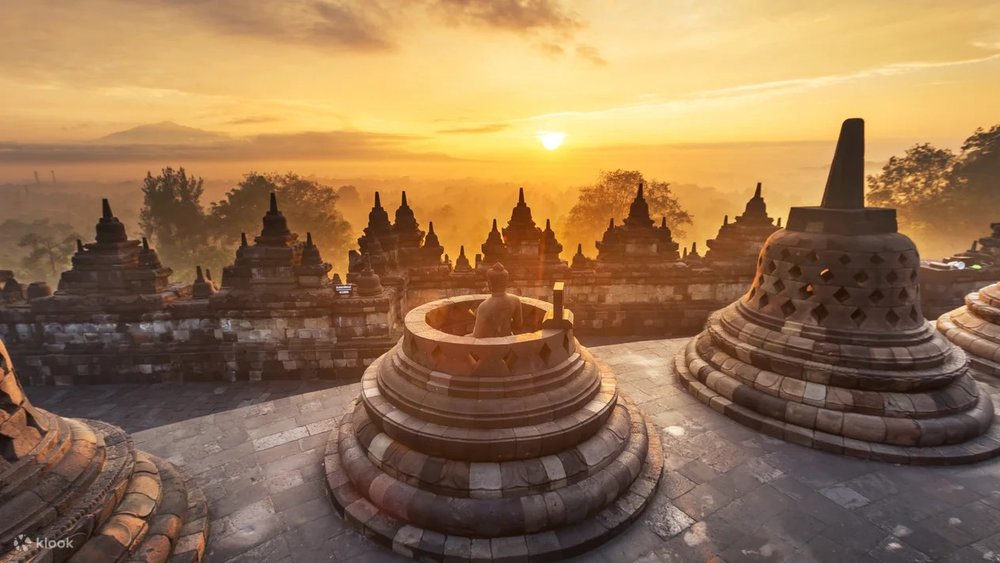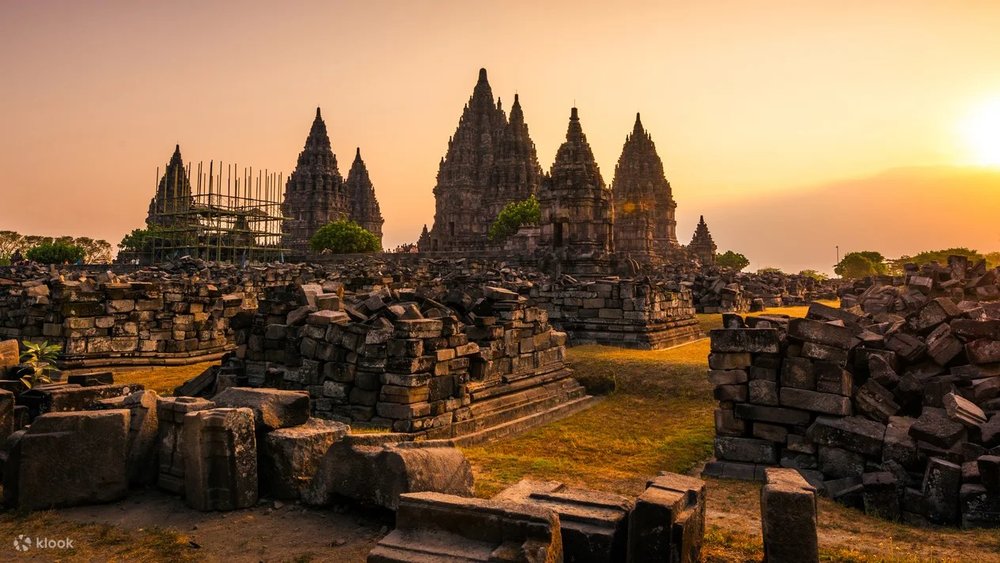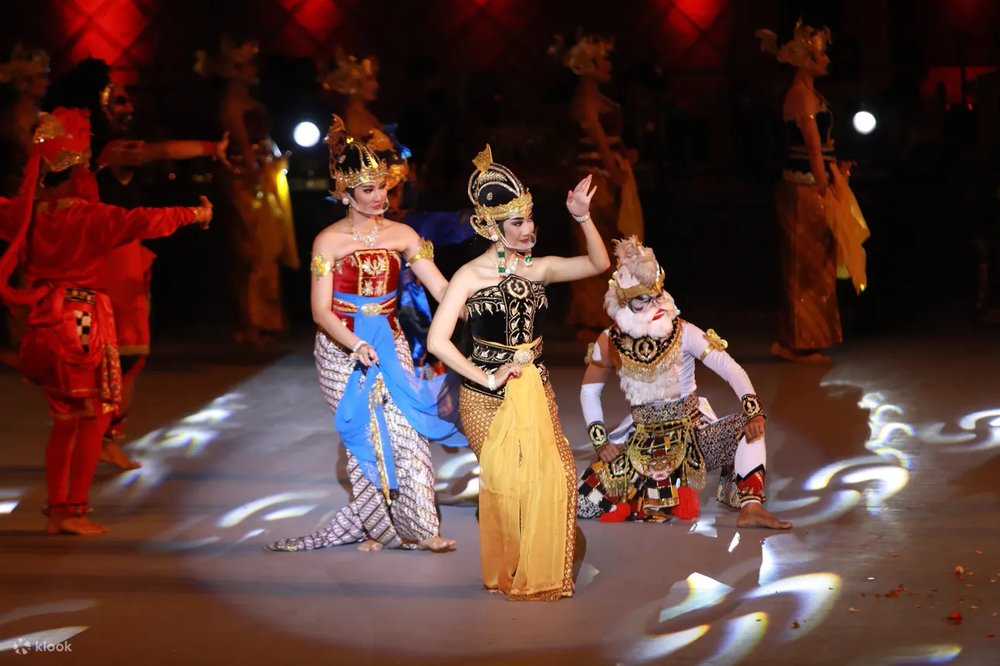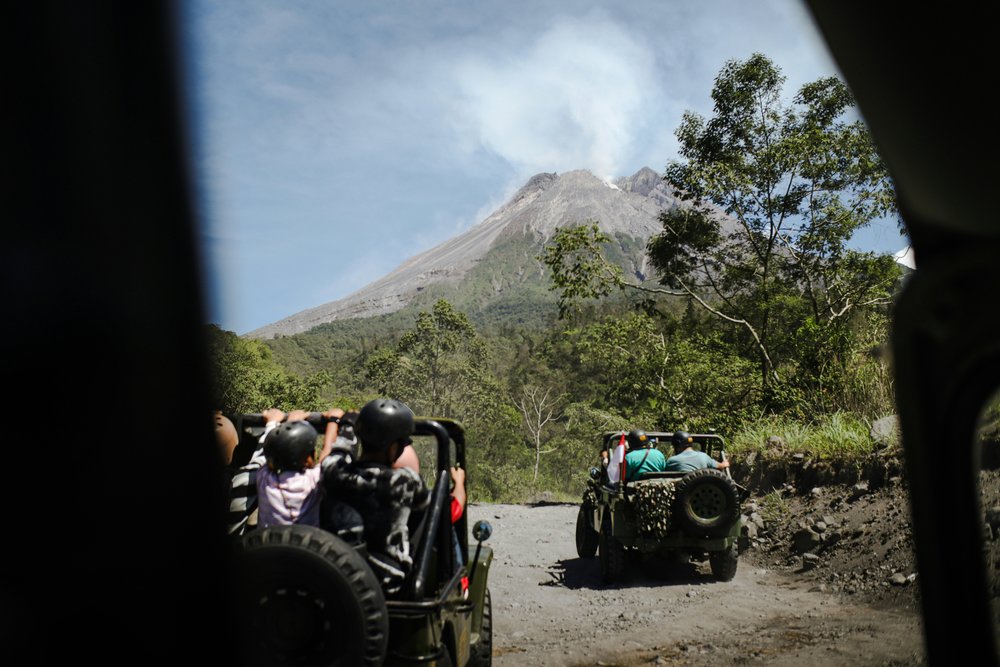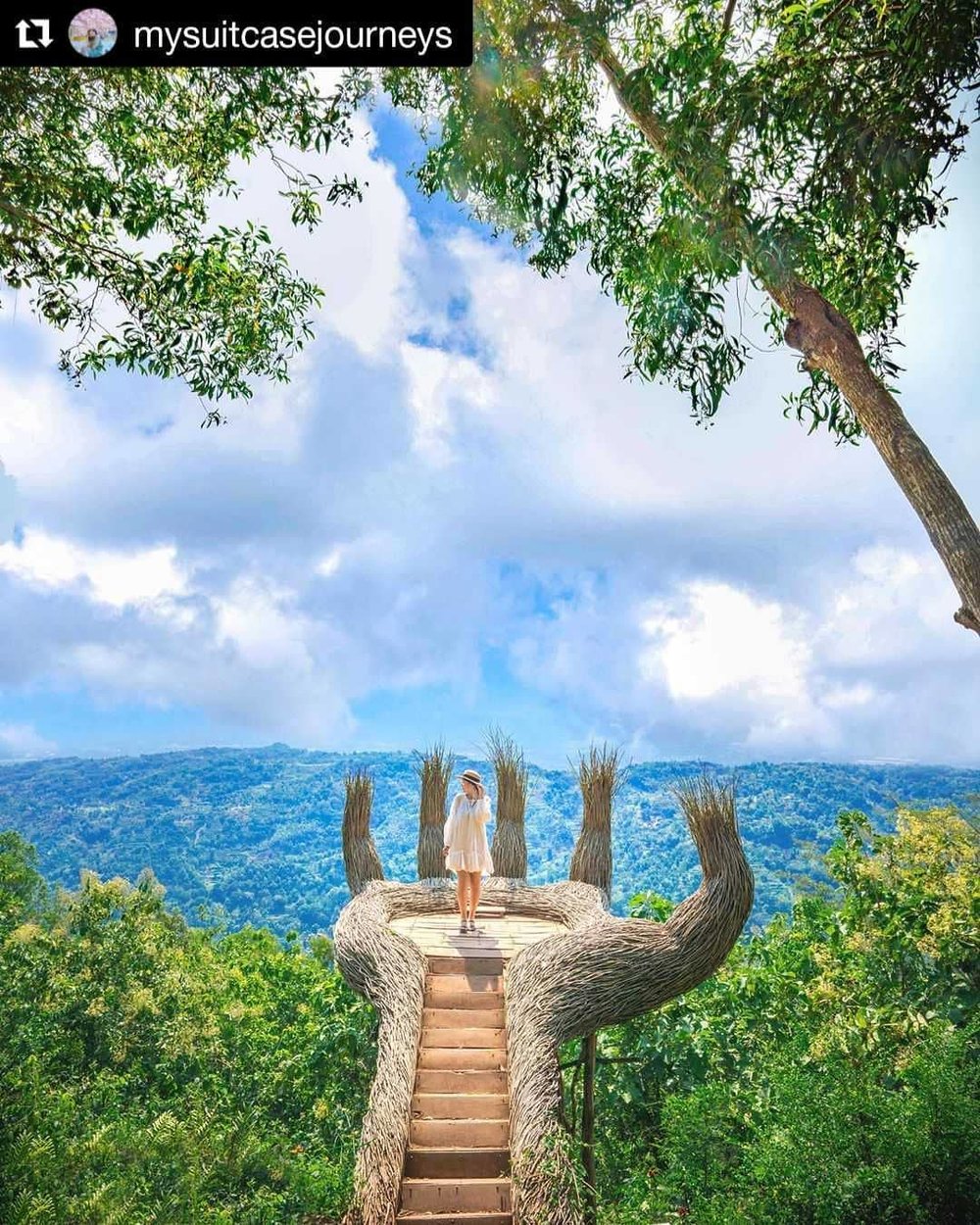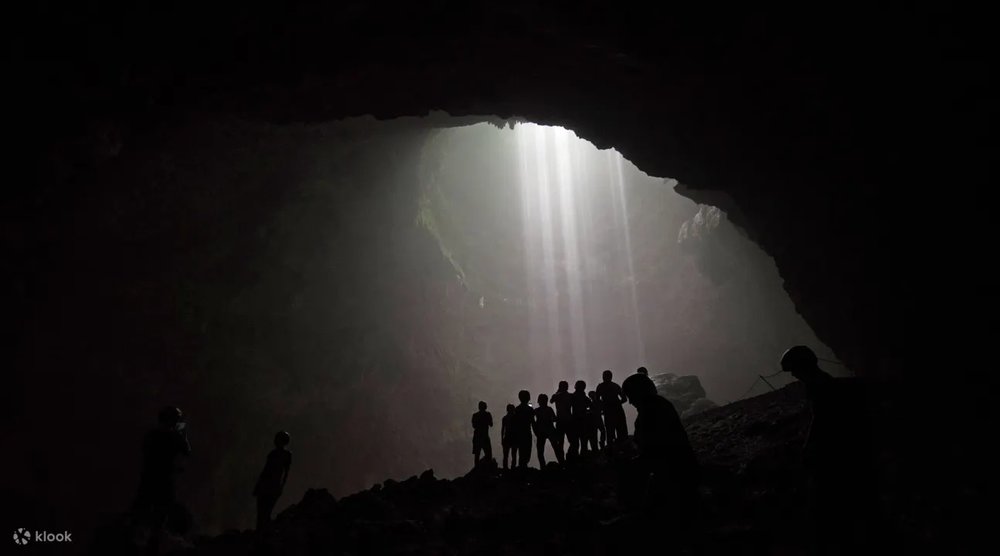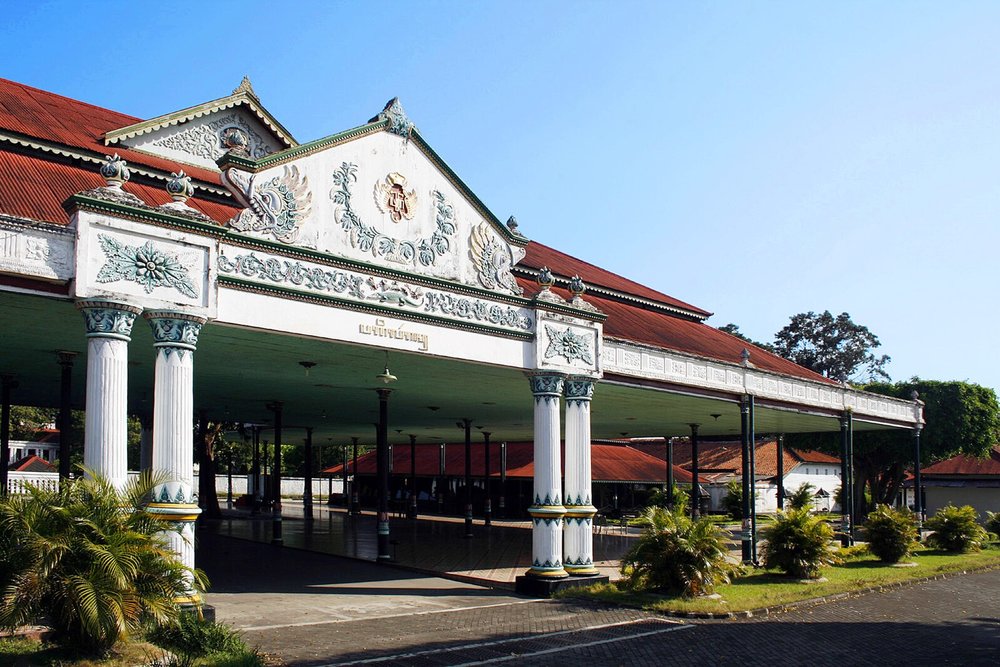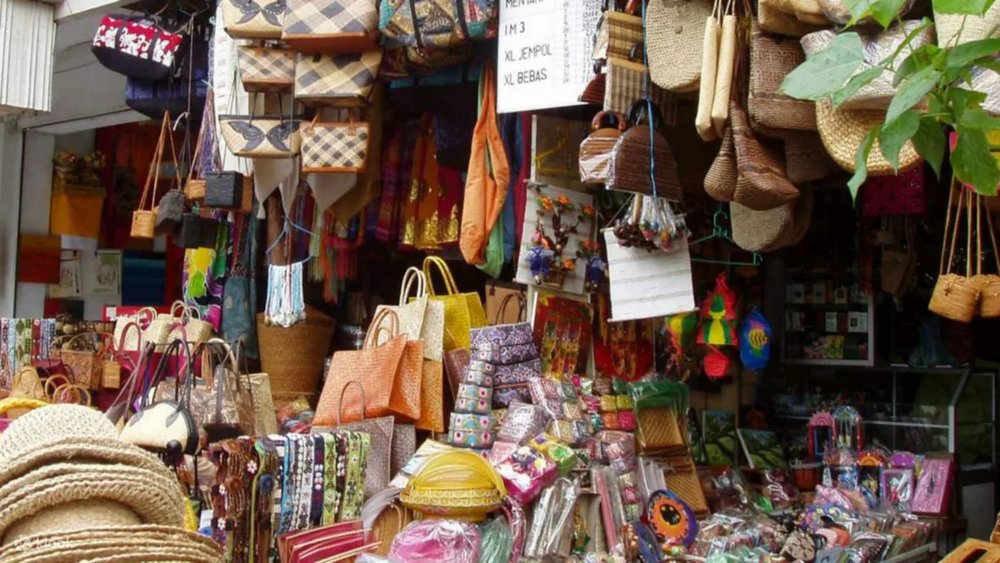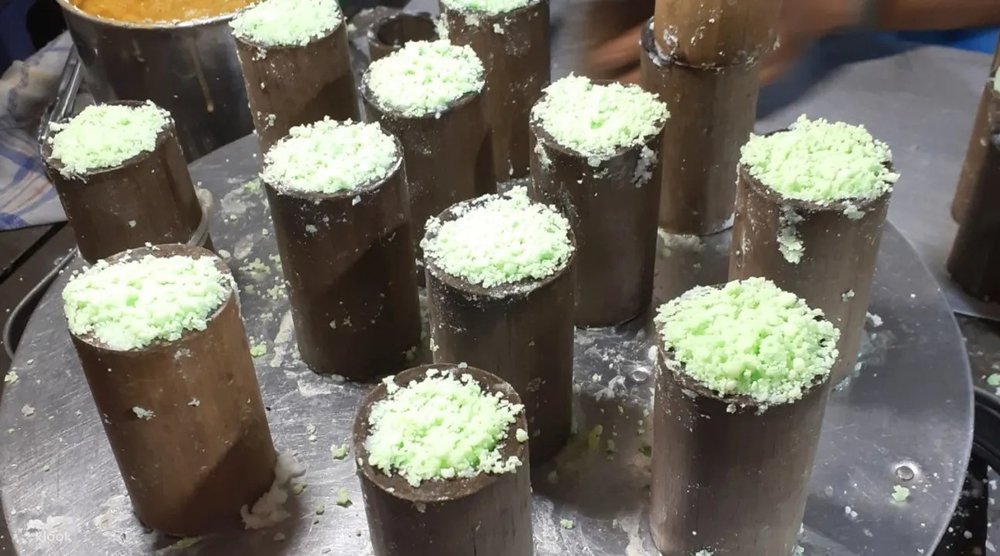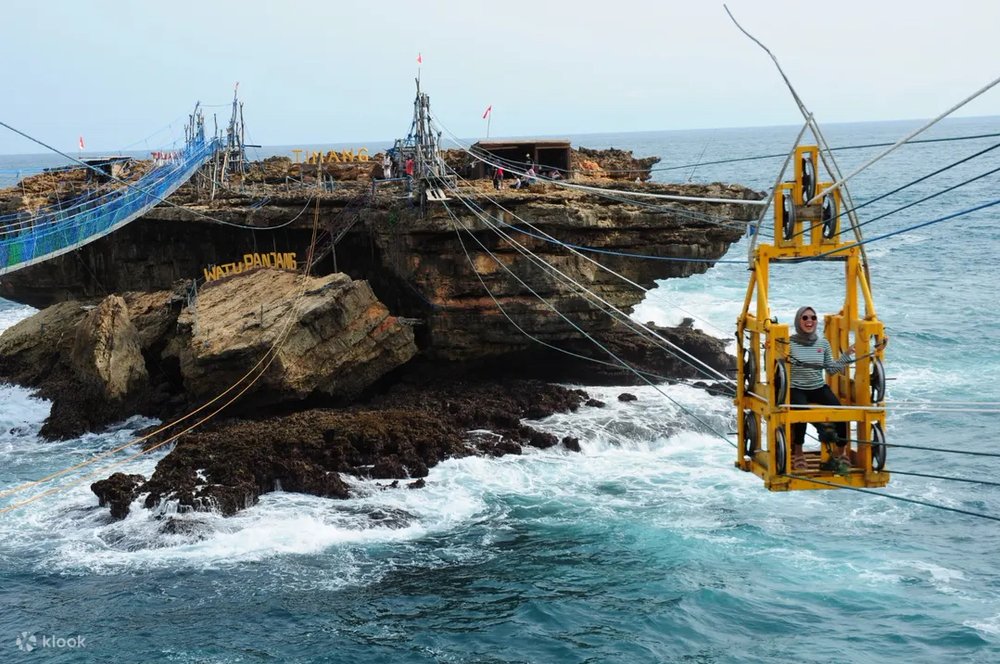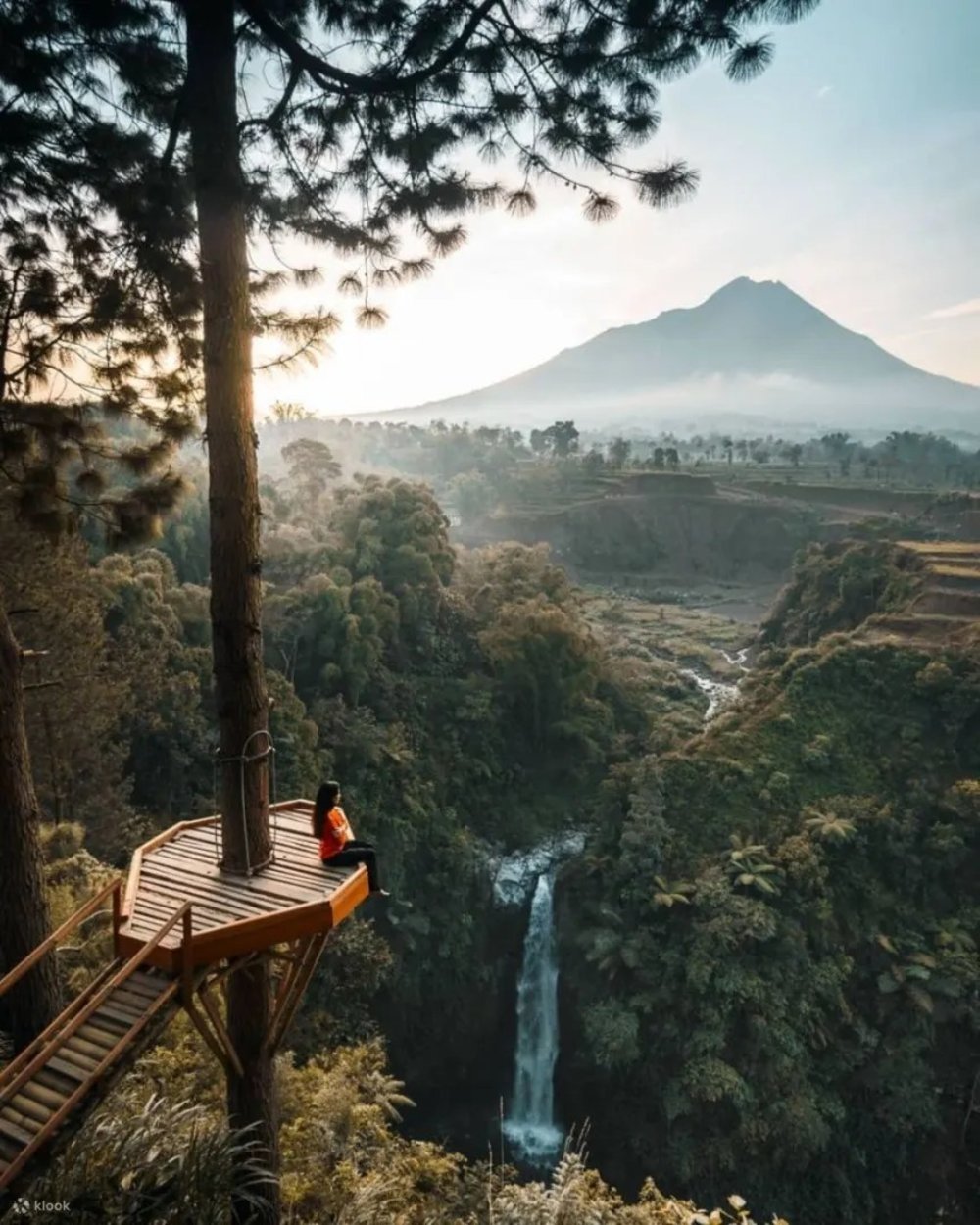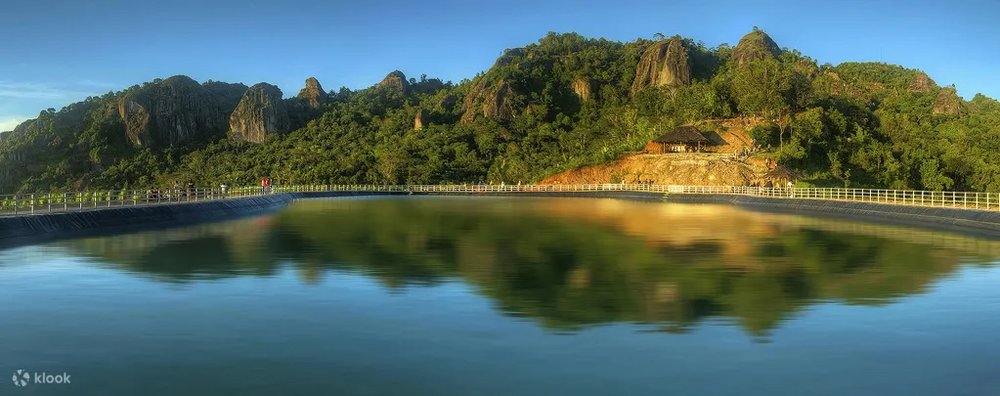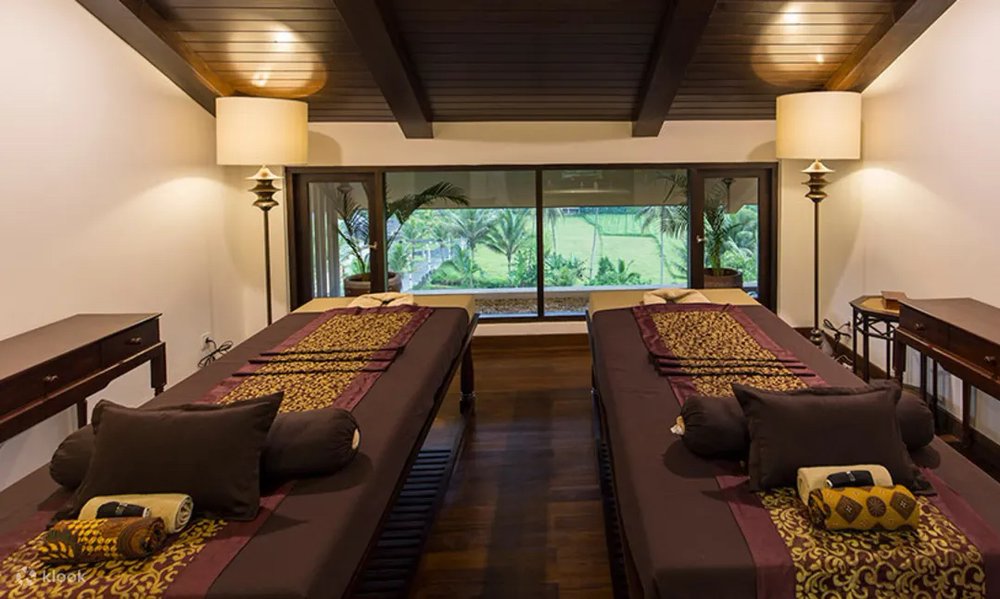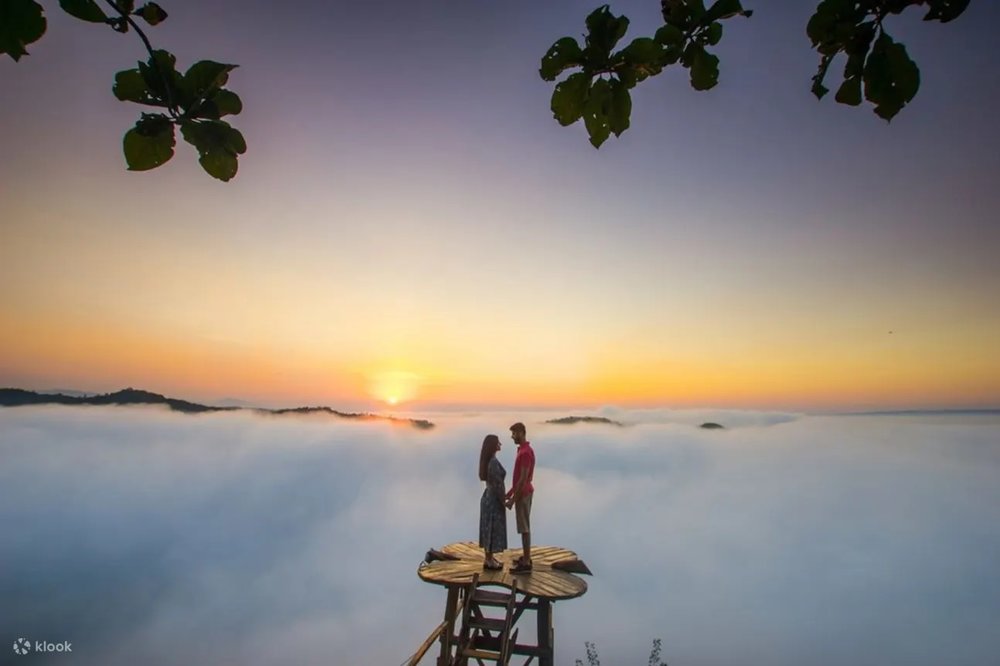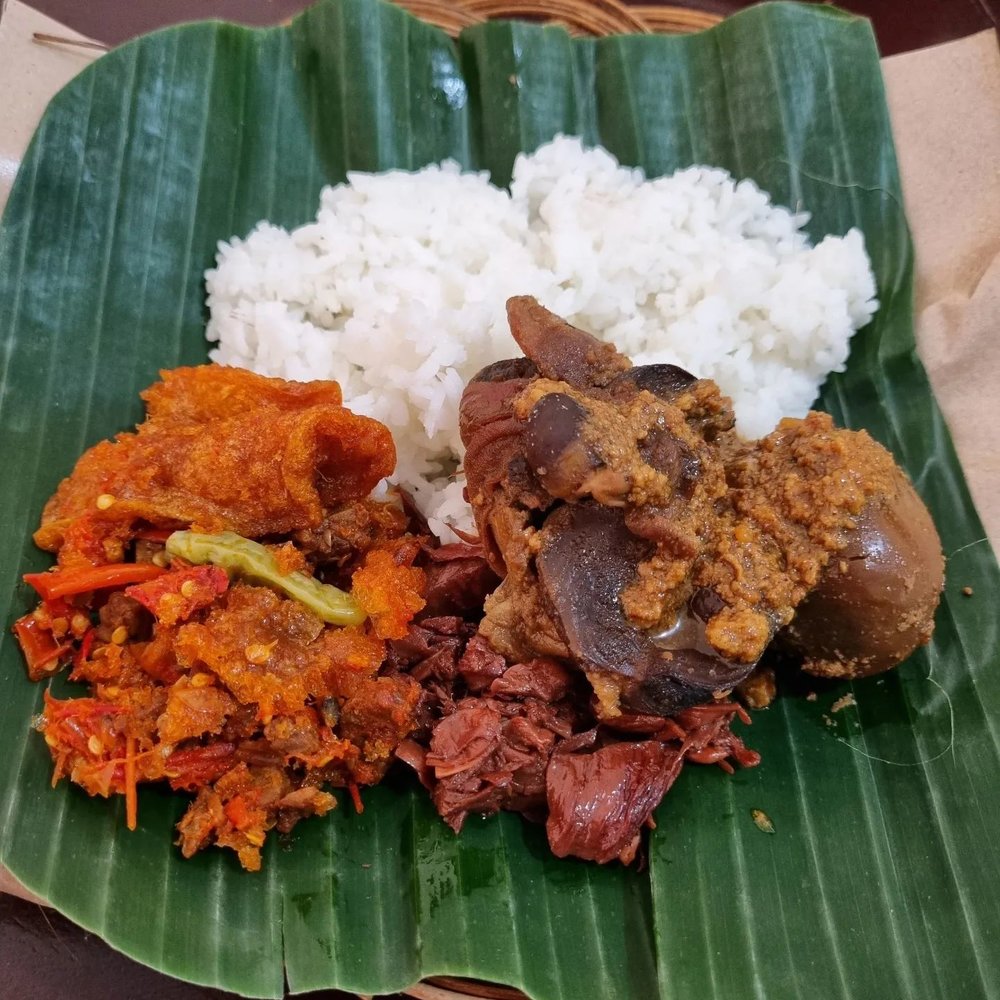Best Things to Do in Yogyakarta
Looking to uncover Yogyakarta's gems? Our straightforward guide lists the best things to do in Yogyakarta, from serene temple visits to lively street markets. Make sure to add these top things to do to your Jogja itinerary!
1. Exploring the Magnificence of Borobudur Temple
Amidst the lush greenery of rolling hills and towering volcanoes, the Borobudur Temple, a UNESCO World Heritage site, stands as a stunning marvel. It embodies both the incredible artistic and architectural achievements of the ancient Javanese civilization, showcasing ancient Javanese art through its carvings and stupas, and an enduring emblem of spiritual importance.
The largest Buddhist temple in existence today, Borobudur, is sculpted with precision—its stupas and reliefs intricately narrate stories from the Buddhist universe, guiding observers through an exploration of enlightenment.
This awe-inspiring tourist destination captivates people from all corners of the earth who are keen to experience its tranquil magnificence. A trip to Borobudur transcends typical travel expectations. It’s an immersive excursion into Indonesia’s rich religious heritage where each structure unfolds part of history’s sacred mysteries.
The History of Borobudur
Erected in the 9th century, the Borobudur Temple stands as an impressive testament to Mahayana Buddhism. Its imposing pyramid-like shape ascends through nine platforms, symbolizing a journey from the mortal coil to enlightenment. It is decked with a remarkable collection of relief panels and statues of Buddha, all exhibiting ancient Javanese artistry that has intrigued both academics and tourists.
The temple features distinctively shaped stupas with bell contours that act not only as architectural marvels but also house enduring Buddha figures within them—silent narrators of piety and artistic dedication. These elements, together with numerous other representations of the Buddha throughout Borobudur Temple, evoke profound admiration and solemnity at this site, which is unparalleled in scale for Buddhist monuments globally. It’s where antiquity harmonizes beautifully with sacredness.
Sunrise at Borobudur
Picture the dawn breaking over Borobudur Temple, as the initial glimmers of sunlight softly touch upon the venerable structures, casting a spellbinding aura that is nothing less than enchanting. The Sunrise Tour at Borobudur provides guests with an opportunity to soak in this peaceful ambience when early morning light washes over the temple’s elaborate stonework. Setting off before daylight arrives, this tour includes both transportation and a guide fluent in English to ensure you’re on-site ready to witness daybreak from 5:00-6:00 AM, timing varying with seasons.
As daylight climbs higher, contrasting beautifully against a reddening sky, it offers an iconic photographic moment—one eagerly sought by camera buffs alike. A veil of morning mist frequently enhances the almost otherworldly charm of Borobudur Temple and paints scenery so surreal it appears like living art.
2. Unveiling the Mysteries of Prambanan Temple
Emerging from the tranquil embrace of Borobudur, you are greeted by the stunning spectacle that is Prambanan Temple. This site holds the title of Indonesia’s premier Hindu temple complex and is recognized as a UNESCO World Heritage site, underscoring its global cultural significance alongside its imposing beauty and enigmatic aura. As an ode to Lord Shiva, this magnificent structure soars into the heavens with slender spires that perfectly capture the spirit of Hindu design principles interwoven with local lore.
Within this grand compound are primary sanctuaries consecrated for deities Shiva, Vishnu, and Brahma—each telling stories of a rich spiritual heritage intrinsic to this corner of Southeast Asia. Guests have ample opportunity to wander through these historic precincts or cycle about in leisurely fashion while absorbing their surroundings.
Architectural Wonders of Prambanan
Prambanan Temple’s design is often compared to the iconic Angkor Wat, with its towering and pointed temples that are a hallmark of Hindu temple architecture. The layout includes shrines for the gods and their vahanas, such as Shiva’s bull Nandi, adding layers of cultural significance to the temple’s structure. Standing at an impressive height of 47 meters, the central Shiva Mahadeva temple is a sight to behold, showcasing the epic scale on which these structures were built.
The walls of Prambanan are a canvas for the tales of Hindu gods and deities, with carvings that bring the epics of Ramayana and Mahabharata to life. These intricate reliefs not only illustrate the temple’s religious importance but also its role as a custodian of Indonesian mythology and religion.
Cultural Performances on Site
In the shadow of Prambanan’s historic edifices, the Ramayana Ballet springs to life, a mesmerizing fusion of dance, narrative and melody recounting the legendary tale of Rama and Sita. The ballet showcases striking costumes and emotive dancers in a performance that is not only artistically stunning but also rich with educational substance.
3. Ascend the Most Active Volcano: Mount Merapi
Yogyakarta boasts an incredible mix of culture and nature, culminating in the majestic presence of Mount Merapi, one of Earth’s most active volcanoes. This ‘Mountain of Fire’ is not only a symbol but also a thrilling destination for those daring enough to either ascend its steep slopes or embark on a rugged jeep expedition through its terrain. The adventure typically kicks off with an early morning sunrise tour at 4:00 AM and promises an arduous yet fulfilling experience that rewards climbers with breathtaking summit views showcasing the raw splendor of Mother Nature.
Mount Merapi’s eruption in 2010 stands as a stark reminder of the volcano’s might. It reshaped the geography and profoundly affected local populations. Present-day adventurers can explore this testament to geological force while honoring both human perseverance faced with natural adversities and embracing the dynamic character our planet exhibits through such dramatic changes.
4. Enchanted by Nature at Hutan Pinus Pengger
Hutan Pinus Pengger or Pengger Pine Forest provides a peaceful haven in stark opposition to the dynamic and powerful presence of Mount Merapi. This idyllic pine woodland, once dedicated to harvesting sap, has transformed into a hub for ecotourism, welcoming guests to immerse themselves in an atmosphere of serenity and inspiration. Within its confines lies the Panawacara sculpture—crafted from desiccated branches of Saliara trees—which symbolizes a pledge toward environmental conservation.
The forest doesn’t just captivate with its artistic expressions. It also caters to outdoor enthusiasts with various facilities:
- Seating arrangements like benches and hammocks are scattered throughout, perfect for visitors wishing to relax amidst natural splendor.
- Family-friendly camping zones offer unique overnight experiences.
- An opportunity awaits every visitor at Hutan Pinus Pengger—to create lasting memories within the embrace of majestic pine trees that define this bewitching sanctuary.
5. Subterranean Wonder: Jomblang Cave Adventure
Embark on a subterranean journey to the Jomblang Cave, an enigmatic sinkhole that serves as a gateway to another world. Bathed in ethereal light when the sun aligns just right, creating what’s known as ‘the light of heaven’, this cave provides a stunning visual spectacle. Descending 60 meters into its depths requires rappelling gear and courage, but offers adventurers an enchanting view of an underground forest bathed in celestial sunlight.
To experience this extraordinary cave system fully, consider joining the Jomblang Cave Day Tour, which includes both transportation and lunch for your convenience. This tour is designed for those looking to delve into nature’s mystical display, but note that participation is exclusive with spots capped at 80 explorers daily—ensuring you should book ahead or arrive promptly to secure access. Don’t forget to wear suitable attire. While boots are supplied upon arrival, remember also to bring along a camera so you can immortalize the ephemeral splendor within Jomblang’s embrace.
6. A Glimpse of Royal History at Keraton Yogyakarta
At the Sultan’s Palace, or Keraton in Yogyakarta, one can experience the essence of royal legacy, which positions it as both a cultural and political epicenter. This historic edifice represents the Javanese universe conceptually with its layout comprising seven unique sections that each carry symbolic importance. The commencement of Kraton’s construction was in 1755, presenting an archetype for traditional Javanese architecture while encapsulating religious philosophies uniting deity, humanity, and nature.
During their visit to Kraton, tourists have opportunities such as:
- Venturing through structures like Sitihinggil known for being the venue of royal enthronements
- Observing diverse cultural performances encompassing classical Javanese music alongside dance performances and wayang puppetry traditions
- Touring the palace museum exhibiting significant historical relics
To enjoy these experiences, visitors are offered insight into regal practices and lore by engaging with Abdi Dalem—dedicated hereditary stewards committed to preserving Keraton’s majesty.
7. Malioboro Street: The Pulse of Local Culture
The pulsating heart of Yogyakarta, Malioboro Street, offers a tangible experience of the local culture with every step taken. As dusk settles in, this street buzzes to life with an assortment of dining setups, vibrant shops, and street food stalls that serve up enticing local street food — filling the atmosphere with delicious scents. It’s a haven for those who delight in both shopping and culinary adventures.
Here you can find vendors displaying exquisite batik products while savory dishes like gudeg and sego pecel invite visitors to savor traditional flavors. The street food stalls, in particular, are vibrant and bustling places where visitors can immerse themselves in the local culture, try local foods, and enjoy a variety of activities and entertainment.
Exploring Malioboro Street by foot allows one to truly immerse themselves in its dynamic ambiance. For those preferring relaxed travel mode, options are available such as becaks (rickshaws) or horse-drawn carts known as andongs. With its myriad of kiosks coupled with energetic street performances lining the boulevard, Malioboro is unarguably a quintessential spot ensuring an authentic encounter with Yogyakarta’s spirited character.
8. Dive into Local Markets and Handmade Souvenirs at Pasar Beringharjo
At Pasar Beringharjo, the oldest marketplace in Yogyakarta, you can immerse yourself in the vibrant atmosphere of local markets while searching for handmade souvenirs. This bustling hub is home to an assortment of genuine products that include:
- Traditional batik textiles
- Keepsakes reflective of Javanese culture
- Creative artwork
- Distinctive regional treats
This market’s extensive variety ensures it stands out as a premier tourist attraction where everyone can discover something special to take home.
Engaging in price bargaining at Pasar Beringharjo is part and parcel of the shopping adventure there. Visitors are not only welcomed but expected to negotiate prices for favorable purchases. These lively exchanges contribute significantly to the market’s attraction and offer insight into customary commercial interactions within this community.
9. Cultural Immersion Through Workshops and Classes
Yogyakarta is a hub of cultural immersion, offering a variety of workshops and classes that allow visitors to delve into traditional art forms and skills.
From Indonesian pottery classes to batik painting workshops, there’s an opportunity to learn and create alongside local artisans. Batik painting, a revered art form in Indonesia, is a highlight, with workshops offering hands-on experience in wax-resist dyeing to create unique patterns on fabric.
10. Coastal Escapes: Timang Beach and Parangtritis Beach
The seaside getaways near Yogyakarta present a striking divergence from the historic and cultural sites of the city. The adventurous soul can find excitement at Timang Beach, where an open gondola transport to a craggy small island complements its breathtaking seashore views.
If you’re an adrenaline-seeker, you can test your bravery by taking the hanging lift to cross the ocean to the boulder – it may get your heart pumping so fast! Or else, there’s also a wooden suspension bridge you can take to cross the ocean.
Famous for its black sand and mystical Nyi Roro Kidul legend, Parangtritis Beach is another must-visit beach in Yogyakarta. Similar to Timang Beach, the waves are quite strong here. But with its long beach strip, it makes taking walks here very enjoyable, especially during sunset. Or if you happen to get tired, you can even take a horse-drawn carriage and enjoy a leisure ride along the beach.
11. Refreshing Moments at Kedung Kayang Waterfall
Nestled within the picturesque landscapes of Yogyakarta, Kedung Kayang Waterfall stands as an underappreciated oasis. Its unique offering enables onlookers to experience its splendor from multiple perspectives, both atop and at the foot of the falls. Accessibility is a breeze with motorbike rentals from Yogyakarta, and for just 4,000 Indonesian Rupiah as an entrance fee, it presents itself as an affordable getaway.
12. Serenity at Embung Nglanggeran and Waduk Sermo
In Yogyakarta, Embung Nglanggeran and Waduk Sermo stand as tranquil havens perfect for serene strolls and relaxing picnics. These well-liked destinations of a lake and a reservoir are celebrated for their peaceful ambiance and captivating natural beauty, offering an idyllic escape to those in search of calm respite.
13. Indulgence at Yogyakarta's Best Spas
Embark on a journey of repose and opulence with the premier spa experiences available in Yogyakarta. At the esteemed YHI Spa located within the Melia Purosani Yogyakarta Hotel, find respite that blends tranquility with equilibrium, courtesy of their time-honored treatments and massages. The facility boasts comforting amenities including saunas, Shiatsu rooms, as well as offering decadent poolside massages to meet all desires for revitalization.
For an alternative retreat into luxury, venture to the Padma Spa at Plataran Heritage Borobudur Hotel where an array of healing and aesthetic services await you. Here they strive to align mind, body, and spirit through therapies like Body Elixir and Javanese Massage rendered by adept therapists who channel Java’s deep-rooted healing customs for a lavish experience beyond comparison.
14. Pedal Through Tradition: Village Cycling Tour
Immerse yourself in the authentic atmosphere and pastoral beauty of Yogyakarta on a bicycle tour through its villages. Traverse charming fishing communities, verdant rice paddies, and vibrant local areas to discover the well-kept secrets of Javanese daily existence. Adventurers will traverse a bamboo bridge during their journey before savoring coffee made from regionally grown beans at a village café.
These bicycling excursions present an unparalleled view into Yogyakarta’s life beyond its famed historical sites and cultural attractions – they showcase the serene allure of rural landscapes as well.
15. Capture Your Memories: Instagrammable Photoshoot Tour
Yogyakarta’s scenic locations provide the perfect backdrop for an Instagrammable photoshoot tour. Tailored for travelers seeking to immortalize their journey, these tours come with professional photo and video services to capture the beauty of Yogyakarta’s landscapes. Guests can choose from various tour programs, each showcasing different iconic spots, with the convenience of hotel pick-up to start the day.
Operating daily for up to 12 hours, these photoshoot tours offer an immersive experience that starts in the early morning hours. It’s a chance to create a visual diary that reflects the spirit and aesthetics of Yogyakarta—an album of memories that will last a lifetime.
16. Thrill-Seekers' Delight: Adrenaline Activities in Yogyakarta
Adventurous spirits looking to quench their desire for thrills will find a host of activities in Yogyakarta. Experience the peacefulness of nature merged with the thrill of adventure while river tubing on the Oyo River, where you can glide through dynamic waterfalls and verdant surrounds. Alternatively, if terrestrial adventures are your preference, you can rev up an ATV at Parangtritis Beach and confront both terrain and tide as you discover cliffs and historical ruins.
17. Family Fun at Obelix Village
Nestled in Pandowoharjo, Sleman, Obelix Village spans a 4-hectare oasis teeming with engaging activities suitable for visitors of every age. This family-oriented recreational space boasts amenities such as a mini zoo, tranquil river environments, and a café area that makes it an ideal locale for family gatherings. To enhance convenience during your stay, the village is equipped with ample parking spaces, sanitary facilities and strategically placed spots specifically designed to capture memories through photographs.
18. Savoring Yogyakarta's Local Cuisine
The local foods of Yogyakarta offer an enchanting journey for those who appreciate unique culinary flavors, with a sweetness and richness that are hallmarks of the area’s cuisine. One can savor traditional dishes such as gudeg, which combines young jackfruit, rich coconut milk, and sweet palm sugar to capture the essence of this region’s palate. Another treat is bakpia – a delectable pastry filled with mung beans – closely associated with Yogyakarta and particularly famous in the Pathok vicinity.
Frequently Asked Questions
What is the best time to visit Borobudur for the sunrise?
To witness the breathtaking sunrise at Borobudur, it’s ideal to plan your visit between 5:00 and 6:00 in the morning. Typically, tours commence from about 3:30 to 4:00 AM. Despite the early commencement time, embracing this schedule promises a captivating experience.
Can you explore Prambanan Temple on your own, or do you need a guide?
Venturing through Prambanan Temple independently is possible, yet employing a guide may amplify your visit by providing essential understanding of the temple’s heritage and mythos.
Are there any safety concerns when visiting Mount Merapi?
Indeed, when planning a visit to Mount Merapi, it’s crucial to put safety first by following local guidance and potentially engaging a guide for either the ascent or taking part in a jeep tour.
Do I need to book in advance for the Jomblang Cave adventure?
Indeed, securing a reservation for the Jomblang Cave experience beforehand is crucial as there’s a daily cap on the number of visitors permitted. It is advisable to book your place ahead of time to avoid disappointment.
Are there any cultural etiquette tips for visiting the Sultan's Palace in Yogyakarta?
When touring the Sultan’s Palace in Yogyakarta, it is essential to wear appropriate attire and display respect for indigenous traditions, acknowledging its historical and cultural importance.
You better lock in your travel plans because we have INSANE BLACK FRIDAY AND CYBER MONDAY deals HAPPENING NOW 🔥 Choose from over 10,000 activities and experiences from around the globe at discounted rates!
Click to unlock Klook promo codes and deals!
What is Klook?
Klook is a world-leading travel activities and services booking platform, covering over 400 destinations and over 100,000 travel services! Klook’s mission is to empower travelers around the world to discover, book, and experience the best things to do anywhere, anytime - including attractions, activities, car rental, tours, local transfers, wifi, and SIM cards.
✨ Follow us for more deals and inspiration for your upcoming travels

